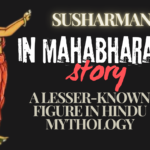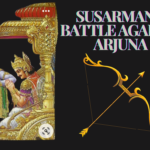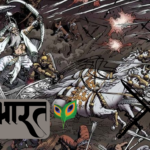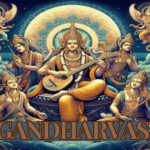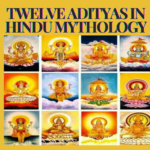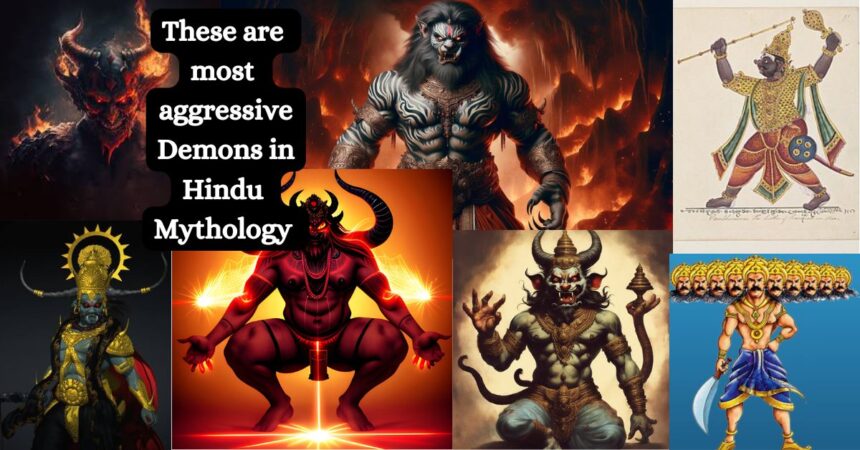Hindu mythology, a vibrant tapestry of tales and characters, presents an intricate dance between gods and demons. While the pantheon of deities often takes center stage, the realm of demons, or asuras, rakshasas, and other malevolent beings, plays an equally pivotal role. These demonic entities are not merely symbols of evil but are complex characters contributing to the cosmic balance. Let’s delve into the fascinating world of theological demons in Hindu mythology.
Asura
Indic religions include a group of beings known as asuras. The more benevolent Devas (also known as Suras in Hinduism) are said to be related to these clans, which are described as power-seeking. The word is occasionally translated as “titan,” “demigod,” or “antigod” in its Buddhist context.
Hindu scriptures claim that the asuras and the devas are constantly at war. The good Asuras are known as Adityas and are led by Varuna in early Vedic literature, while the evil Asuras are known as Danavas and are led by Vritra. Agni, Indra, and other gods are also referred to as Asuras in the earliest Vedic texts in the sense of being “lords” of their respective fields of expertise, knowledge, and skills.
1. Andhaka
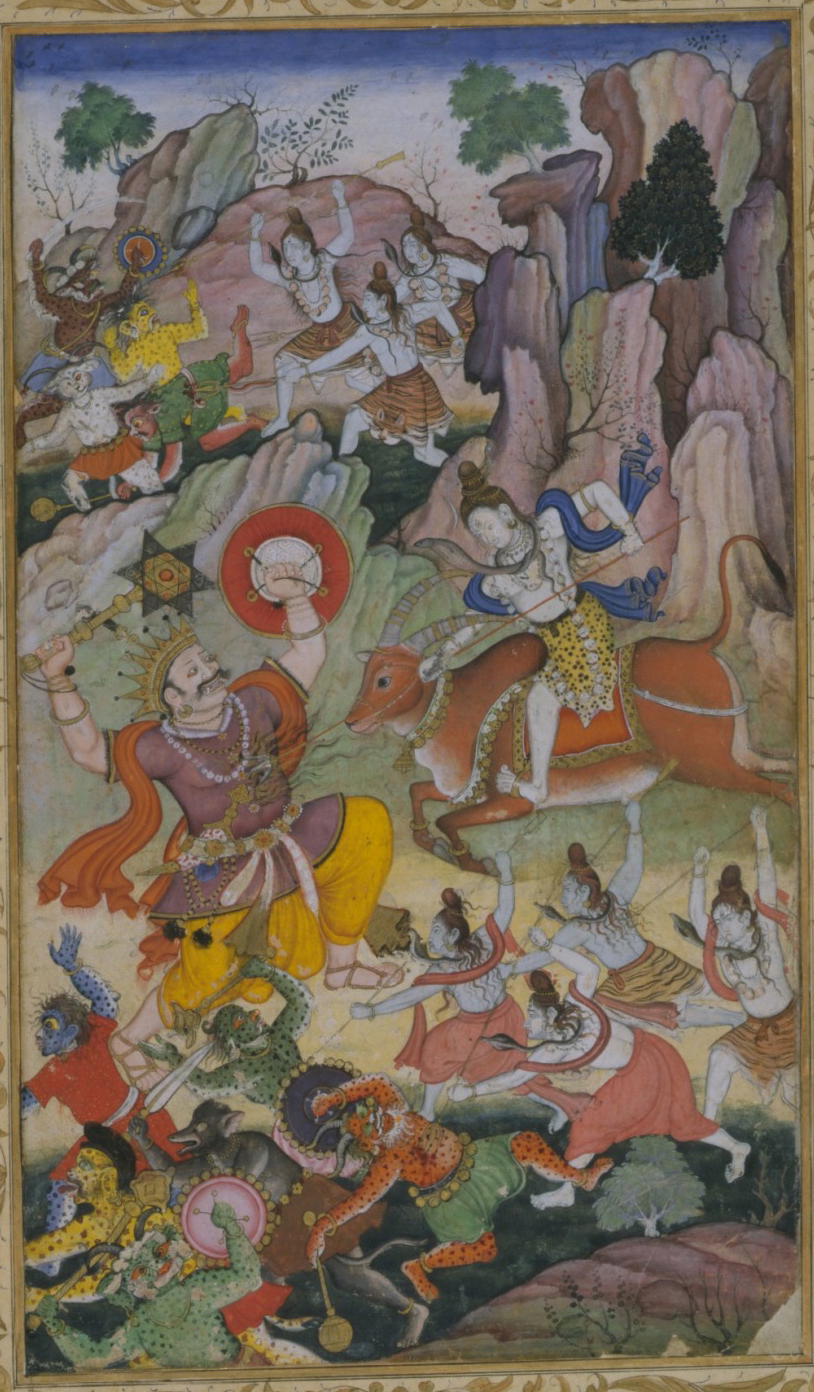
Andhaka, a notorious asura, is often portrayed with 1,000 heads, arms, and legs, though some versions attribute him 2,000 eyes. His tale is extensively mentioned in texts like the Matsya Purana, Linga Purana, and Shiva Purana. Born to Shiva and Parvati, Andhaka was blind and rejected by his parents. After intense penance, he received a boon of near invincibility from Brahma. However, his growing arrogance led to his downfall, and he was ultimately slain by Shiva and Parvati.
2. Arunasura
Arunasura, a daitya residing near the Ganges, performed severe penance to Brahma, securing a boon that made him immune to death in battle, by weapons, or by any living beings. This emboldened him to challenge the gods, leading to his demise at the hands of Brahmari, a form of the Goddess Parvati, who transformed herself into a swarm of bees to overcome his boon.
https://www.youtube.com/watch?v=7YKIE_iNgjU
3. Bakasura
In the Mahabharata, Bakasura, a fearsome rakshasa, terrorized Ekachakra, devouring its people. The villagers struck a deal to send him food and a human sacrifice weekly. When the Pandavas visited the village in disguise, Bhima volunteered to deliver the food, defeating Bakasura in a fierce battle, showcasing themes of heroism and righteousness.
4. Mahabali
Mahabali, a daitya king and grandson of Prahlada, is celebrated for his benevolence and devotion. Despite his virtuous rule, the gods, fearing his growing power, sought Vishnu’s intervention. Disguised as Vamana, a dwarf Brahmin, Vishnu asked for three paces of land. Mahabali granted the wish, and Vamana covered the entire universe in two steps, sending Mahabali to the netherworld. His story is commemorated during Onam, symbolizing sacrifice and humility.
5. Sankachuda
Sankachuda was the incarnation of Sudhama. He obtained a boon from Lord Brahma that as long as he wore Vishnu’s amulet and his wife was chaste, he would be immortal. Even though he fought with Kali and Mahadev, he was easily overpowered. Finally, Lord Shiva killed him after meeting the requirements of Brahma’s boon.
Although in previous life Sankachuda was Sudhama but he become a demon because of the curse given by Radha.
6. Kabandha
Kabandha, a rakshasa cursed by Indra, encountered Rama and Lakshmana during their quest to rescue Sita in the Ramayana. After being slain by them, he revealed his true form as a Gandharva and guided them to Sugriva, marking a significant turn in their journey.
7. Kumbhakarna
Kumbhakarna, Ravana’s colossal brother in the Ramayana, was known for his immense strength and appetite. Cursed to sleep for six months at a time, he awoke to fight valiantly for Ravana during the battle of Lanka, eventually being killed by Rama. Despite his loyalty, his tale highlights the tragic consequences of misplaced devotion.
8. Kali
In the Kalki Purana, Kali is depicted as a malevolent force symbolizing the decay of the moral order. Born with an Upasthi bone, he revels in gambling, liquor, and violence. His story underscores the inevitable decline before the restoration of dharma.
9. Maricha
Maricha, an ally of Ravana, transformed into a golden deer to lure Rama away, enabling Sita’s abduction in the Ramayana. His earlier confrontations with Rama resulted in his transformation from a formidable rakshasa to a tool in Ravana’s schemes, ultimately leading to his death at Rama’s hands.
10. Puloman
Puloman, a Danava king from Patala, fathered Shachi, Indra’s consort. Indra killed Puloman to marry Shachi, reflecting the complex interplay of power and relationships among celestial beings.
11. Rakshasas
Rakshasas, often man-eaters and embodiments of tamas (darkness), play vital roles in Vedic and post-Vedic scriptures. Not all rakshasas are malevolent; some, like Vibhishana, Ravana’s brother, align with dharma, aiding Rama in the Ramayana. Their diverse portrayals highlight the spectrum of morality within these beings.
12. Putana
Putana, a rakshasi sent by Kamsa to kill the infant Krishna, attempted to poison him through breastfeeding. Krishna, recognizing her intent, drained her life force, demonstrating his divine nature and the theme of good triumphing over evil.
13. Mahishasura
Mahishasura, a shape-shifting demon with a boon of near invincibility, waged war against the gods. Goddess Durga, embodying divine feminine power, battled and defeated him, symbolizing the victory of good over evil. His tale is celebrated during Navaratri, honoring Durga’s strength and resilience.
14. Narakasura
Narakasura, known for his tyranny, was defeated by Krishna, who restored cosmic order by liberating celestial captives. His defeat is celebrated during Diwali in some regions, symbolizing the triumph of virtue.
15. Hiranyakashipu
Hiranyakashipu, father of the devout Prahlada, gained invincibility through a boon, but his arrogance led to his downfall at the hands of Narasimha, Vishnu’s avatar. His story highlights the eternal conflict between dharma and adharma.
16. Ravana
Ravana, the ten-headed king of Lanka, is one of the most complex demons in Hindu mythology. Despite his devotion to Shiva and scholarly prowess, his abduction of Sita led to a catastrophic war with Rama, ending in his demise and illustrating the consequences of unchecked ambition and desire.
17. Vritra
Vritra, a dragon or serpent representing drought, battled Indra. Despite a boon rendering him immune to weapons, Indra, with divine assistance, ultimately defeated him, restoring balance and symbolizing the triumph over natural calamities.
18. Indrajita
Indrajita, Ravana’s son, known for his sorcery and martial prowess, possessed boons that made him nearly invincible. He was ultimately slain by Lakshmana, symbolizing the eventual downfall of even the most powerful when aligned against dharma.
19. Madhu and Kaitabha
Born from Vishnu’s ear wax, these demons gained near invincibility through a boon from Adi Shakti. Vishnu, using his wit, eventually vanquished them after a prolonged battle, emphasizing the triumph of intelligence over brute strength.
20. Bhasmasura
Bhasmasura, granted the boon to turn anyone into ashes by touching their head, was tricked by Shiva and Vishnu into destroying himself, showcasing the consequences of reckless power and the divine play of trickery.
21. Jalandhara
Born of Lord Shiva’s anger, Jalandhara shook the neck of Lord Brahma when he was just an infant. Brahma, pleased with his valor, blessed him with a boon that he would be invincible to all beings except Rudra. Jalandhara fought with Vishnu to a stalemate and encountered a group attack from Lord Karthikeya, Ganesha, Virabhadra, and Nandi, defeating them. He was finally killed by Lord Shiva.
22. Rahu
In Vedic myths, Rahu is the one who swallows the sun and causes eclipses. He is depicted as a serpent with no body, riding a chariot drawn by eight black horses. Rahu is one of the planets in Vedic astrology.
23. Raktbeej
Raktbeej was a demon with a boon that whenever and wherever a drop of his blood fell, a duplicate Raktabija was born on the spot. This made him nearly invincible until Goddess Kali defeated him by consuming his blood before it could touch the ground.
24. Banasura
Bali’s son, Banasura, was a thousand-armed demon king. After helping Lord Shiva, he became his protector. Just the mention of his name was enough to scare off kings and gods. Banasura’s formidable power and devotion to Shiva made him a significant figure in Hindu mythology.
25. Tarakasura
Tarakasura was another overpowered asura who had two boons from Lord Brahma that made him almost invincible. He encountered a group attack from deities like Lord Vishnu, Indra, Yama, Kubera, Vayu, Agni, Varuna, Asvins, Moon-god, and Sun-god, and was invincible in that battle. Despite his insane durability, he was momentarily overpowered by Lord Karthikeya but was finally killed by him. The other name of Tarakasura was Vajranga
How was Tarakasura killed?
When Lord Indra along with other gods went to Lord Vishnu , then Lord Karthikeya has taken the responsibility of killing this legend .
26. Vritra
Vritra is a dragon or serpent, personification of drought or adversary to Indra. He had a boon that no weapon could kill him and was also capable of bringing huge sandstorms. Many people often get confused whether Vritra is a demon or god? . This demon is an adversary of Lord Indira according to hindu mythology who is responsible for drought like condition in the world.
The demon was killed by Lord Indra with a tunderbolt made from the sacred bones of sage Dadhich
Conclusion
The demons in Hindu mythology are more than mere antagonists; they embody complex traits and themes that enrich the mythological narratives. Through their tales of hubris, penance, and eventual downfall, these characters highlight the eternal struggle between good and evil, teaching profound lessons about morality, power, and the human condition. Their stories, interwoven with those of gods and heroes, continue to captivate and inspire, reflecting the rich cultural and spiritual heritage of Hinduism.
